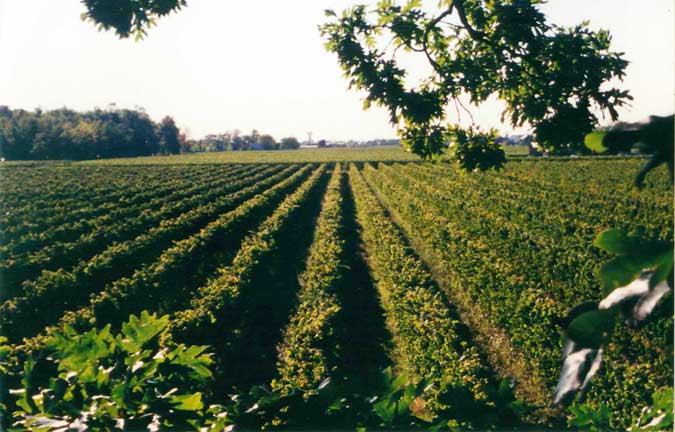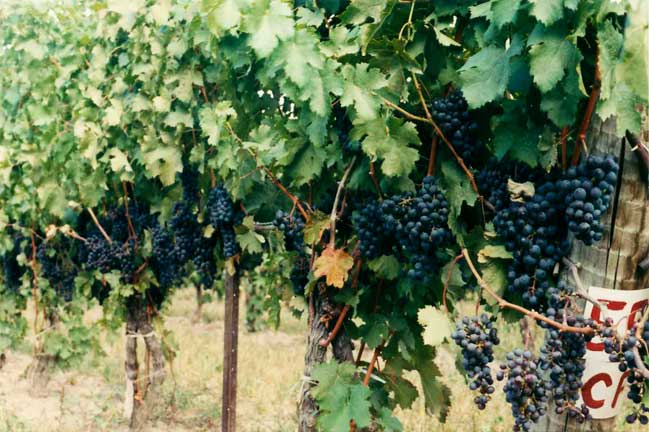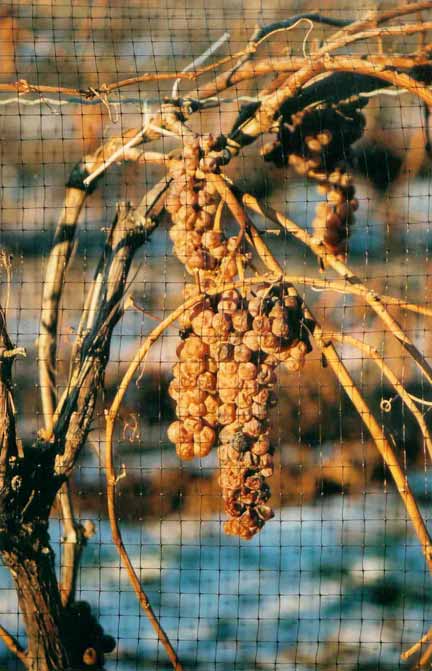In 1973 the first block of land was purchased not knowing what a valuable property it would turn out to be. The soil is clay loam with plenty of stones, which in turn have a moderating effect on temperature by absorbing heat during the day and releasing it at night. While being very detrimental to the equipment the rocks aid greatly with drainage. Due to this rich fertile soil, we have adopted a program where we till every other row, with the alternate rows being left in sod. This slows the vines vigour resulting in less vegetative characteristics in the wine.
There are many other viticultural practices we use to increase varietal character in the wine including the choice of a flat bow (low cordon) trellis system. The fruiting cane is twisted around one wire and tied flat. This allows each bud the same amount of sunlight and guarantees even growth, allowing the chutes to enter the bottom pair of catch wires at the same time. The chutes will continue to grow through the multiple pairs of catch wires (with some help from our skilled workers) creating a thin, yet tall canopy maximizing the leaves exposure to the sun. Since our chutes are even so too is the fruiting zone, which helps in the manual removal of all leaves around the bunches. This leaf removal allows for good sun exposure as well as increasing the air movement in the canopy, thus decreasing the incidence of disease. At veraison, the unwanted bunches are manually removed, ensuring full concentration of flavours in the remaining ones.



